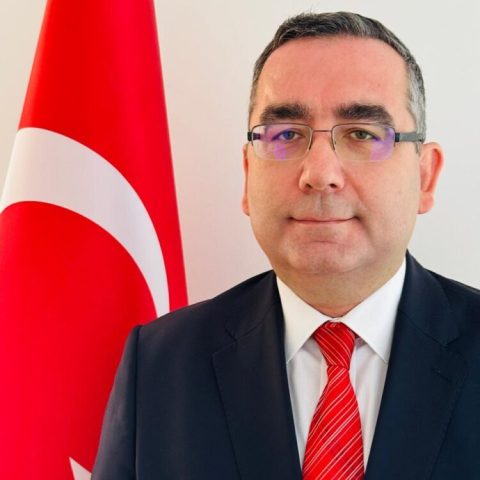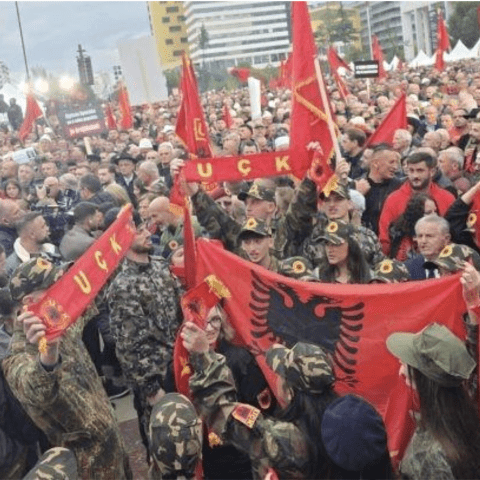During last Summer, more than one thousand foreign tourists set up camp in the valley of the Valbona River, in Tropoja, 225 kilometers North East of Tirana. Never before have the “Cursed Alps”, known only to a small number of Albanians, been such an attraction to tourists from Czechoslovakia, Germany or Kosovo. For those foreigners who have always been curious to explore zones that have rarely been traversed by man, Valbona is a genuine miracle, well worth the sacrifice of the long journey to get there. It is located a mere 25 kilometers from the town of Bajram Curri.
The moment you drive around the Canyon of Shoshani, you have the feeling that you are winding through endless gorges and up the faces of mountains, one after the other. Nowhere else in Albania can you come cross such steep mountain slopes and vallies as in Klisyra, Dragobia, Quka and Dunisha. And when you’re finally convinced that this alpine meandering will go on forever, the biggest village in the zone, Dragobia suddenly confronts you.
The village is entirely desserted and the greater part of its inhabitants have abandoned the 200 year solid stone houses. As soon as you exist this village, on the right hand side of the Valbona River, at the foot of a huge rock face which you can barely distinguish through the foilage of the dense forest, is the mouth to the Cave of Bajram Curri, as it is known. Bajram Curri was an outstanding Albanian warrior and hero 1910-1920). Legend has it that the remains of the Hero from Tropoja have been laid to rest there. After leaving Dragobia behind, one of Albania’s most wonderful waterfalls comes into sight: the Valbona Waterfall. The locals believe that this location has been blessed by the wood fairies(semi-Godlike creatures of Albanian mythology), who every evening would bathe in these crystal waters. After the waterfall, the mountains of Jezerca to the North, Zhaborr Ridge and of the Open Gorges to the South, all form a glacial plateau, on which the village of Valbona is located, with a population of about 300. And from this glacial field, where tourism died back in the eighties’, you can see the eternal snow fields high up on the steep slopes of the mountains of Kollata, of the White Circle. Just a little further on is the Rragami waterfall located near the village that bears the same name.
Instead of hotels-there are houses-like minature stone fortresses, easily 200 years old
In Valbona, in this village with its 300 inhabitants, there are no hotels as normally conceived, but there are several traditional fortress-houses which have been adapted and renovated into inns for tourists, along the lines of local tradition. The locals have never hesitated to welcome visitors into their homes. In these 200 year old traditional fortress-houses, tourists have been warmly welcomed and looked after. Czech and German tourists have preferred camping in their own tents and spending their days exploring the Albanian Alps.
Valbona Valley National Park
The Valbona Valley has been proclaimed a National Park. The valley has a surface area of about eight thouand hectares and is located 25-30 kilometers North East of the city of Bajram Curri. The Valley lies in the northern most part of the country, east of the alpine massif which falls within the district of Tropoja. The Valbona Valley begins from the Valbona Gorge, to the West and ends in the Drini Valley to the South West, very close to the dam of the Fierza Hydropower Scheme. Its length from the Valbona Gorge to the River Drin is 50.6 kilometers. The Valley stretches at the feet of towering mountains and displays an incredibly beautiful selection of colours, in every season, creating the image of a valley full of labarynths and surprises. Its scientific, touristic and health values are combined with a biodiversity of national and international importance. The rocky peaks, the forests, the mountain streams and the Valbona River, seen from above, create the image of a giant and breath-taking crater. The natural conditions of this park are very favourable for all kinds of tourist attractions; wonderful fresh water trout fishing; relaxation; alpinism and a broad range of sports. Deep in the interior of the Park there are some very interesting caves. The Dragobia Cave is the most famous, where the remains of Bajram Curri are purported to be.










